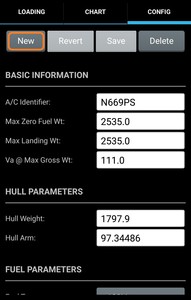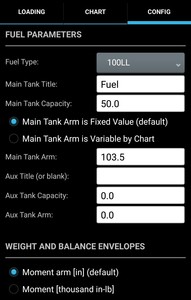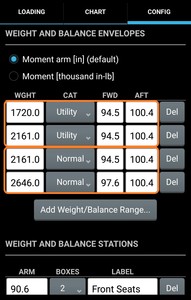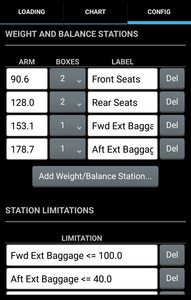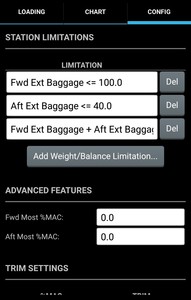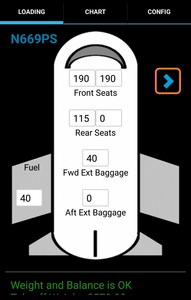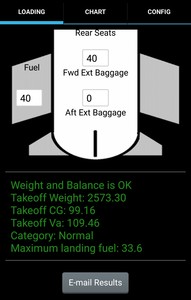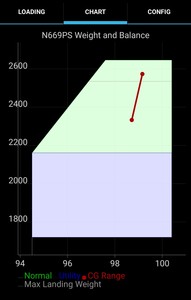
Weight & Balance Tutorial
STEP 1
Select “New” from the configuration tab and input aircraft parameters. If “Max Zero Fuel Wt” or “Max Landing Wt” are not specified, enter max takeoff weight.
NOTE: Hull weight, aka Empty Weight, and Arm are located in the aircraft weight and balance.
STEP 2
“Fuel Type” may be entered in Pounds or gallons (AVGAS, JET-A). Specify the “Main Tank Title” and “Aux Title” as you would like them to appear on the “Loading” tab.
STEP 3
Select “Add Weight/Balance Ranges”, starting with the minimum AND maximum weight for the FWD and AFT CG range in the Utility category. Repeat for minimum AND maximum weight in the Normal category.
STEP 4
Select “Add Weight/Balance Station Limitations” and label each one, per the POH. The labels are used to define the “Station Limitations” in the next step.
STEP 5
Enter station limitations per aircraft POH. Enter text for each station exactly as you typed it in STEP 4, for each “Weight and Balance Station”. Use signs, as shown in the example below, for each station or station combination. Select SAVE.
STEP 6
Multiple aircraft can be configured and saved then selected using the left or right arrows on the “Loading” tab. Enter values for each defined station to generate the weight and balance.
STEP 7
The status of the values entered for each station are compared to the parameters from the “Config” tab to generate a status report. The weight and balance can be shared via Email. The CONFIG file is saved in Internal Storage > WeightAndBalanceAC.
STEP 8
Select the “Chart” tab for a visual depiction of the current aircraft weight and balance calculation. This chart is drawn using data input from Step 3. The high point on the graph depicts current configuration. The low point on the graph assumes zero fuel.





